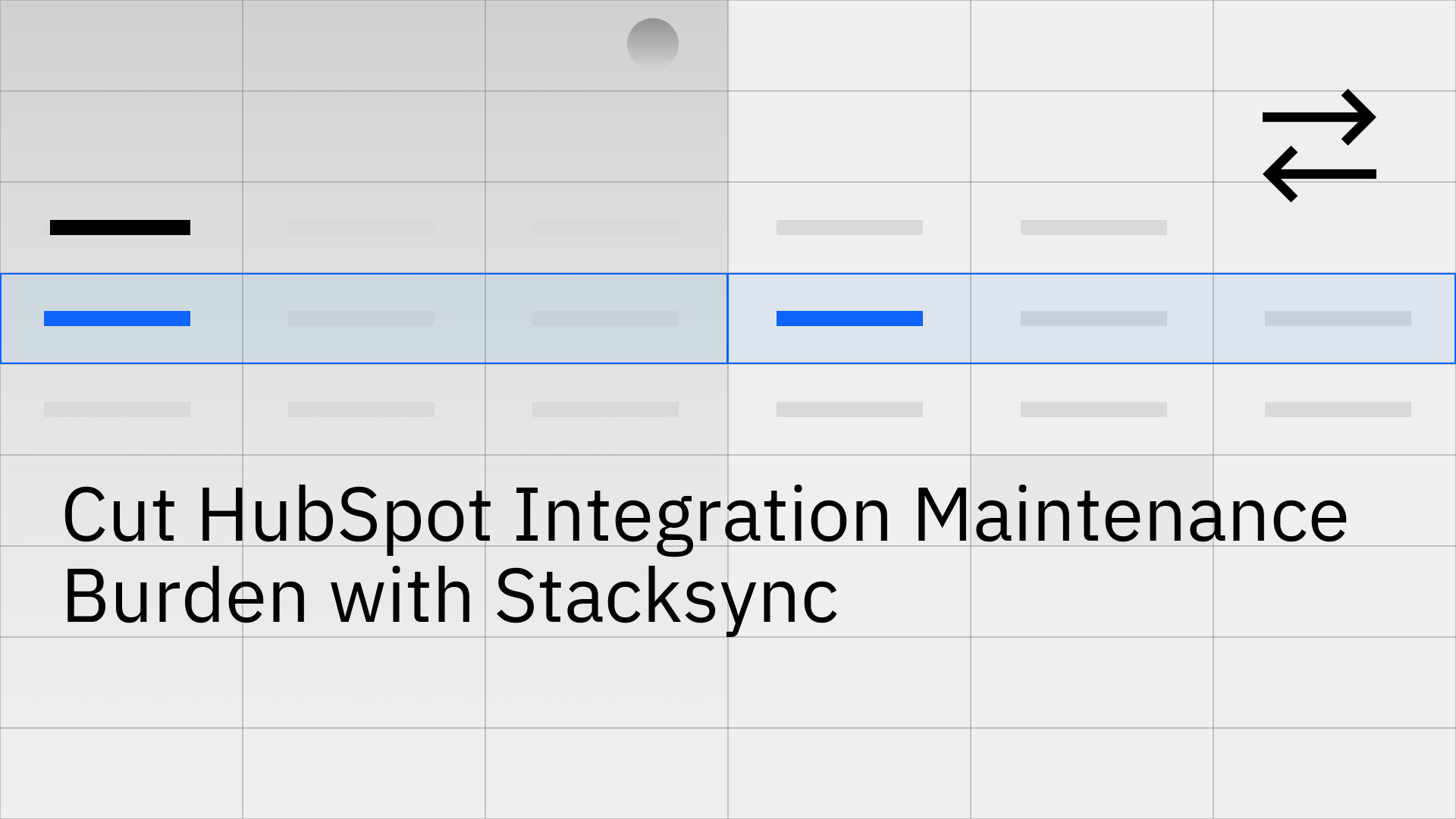
Integrating HubSpot with critical business systems like ERPs, databases, and other SaaS tools is essential for creating a unified operational view. While the initial integration build is a known hurdle, the ongoing maintenance creates a significant and often underestimated burden on engineering teams.
This "integration tax" involves constantly fixing sync errors, updating API calls, handling schema changes, and managing rate limits. The initial investment in building an integration is merely the starting point; the long-term resources required to keep it running often become a major operational drain [1].
This HubSpot integration maintenance burden silently consumes 30-50% of an engineering team's time, diverting focus from innovation and creating significant operational friction.
Maintaining custom HubSpot integrations reveals recurring, systemic problems that drain resources and efficiency.
Custom-coded integrations are inherently brittle and prone to breaking when connected systems are updated. This forces developers into a state of reactive firefighting, diverting them from high-value, core product development. They must manually debug common issues like data duplication, missing records, and inconsistent data formats that cripple downstream processes and require tedious manual cleanup [2]. These issues are not theoretical; they manifest in tangible ways, such as the sync problems between platforms like Salesforce and HubSpot. Finding solutions to 5 major HubSpot-Salesforce sync problems consumes valuable time that could be spent on innovation.
As data volume increases, custom integrations frequently fail to manage HubSpot’s API requests efficiently, leading to throttling and critical sync delays. This technical limitation is a well-documented challenge in system integrations, where inadequate compatibility can disrupt workflows [3]. Scaling a homegrown solution to overcome these API walls requires significant architectural re-engineering, which further contributes to the maintenance backlog and delays strategic objectives.
The true cost of integration maintenance extends far beyond developer salaries [4]. Building a single custom API integration can cost between $25,000 and $400,000, not including ongoing support [5]. The opportunity cost is often even greater, represented by new features that are never built, strategic initiatives that are perpetually postponed, and a slower time-to-market. Furthermore, poor data quality resulting from faulty syncs can lead to flawed business intelligence and eroded customer trust, directly impacting revenue and operational efficiency [6].
Stacksync provides a managed, no-code integration platform designed as a systematic solution to eliminate the variables that cause maintenance overhead. By abstracting away the complexity of data synchronization, Stacksync removes the maintenance burden from your engineering team.
Stacksync's core function is to provide reliable, real-time, bidirectional data synchronization between HubSpot and your other critical systems. This controlled approach ensures verifiable data consistency across all platforms, effectively eliminating data silos and errors from manual data handling. Instead of building and debugging complex data flows, you can implement a complete HubSpot two-way sync that operates reliably from day one.
Stacksync's architecture is engineered to systematically manage API limits. Our platform intelligently monitors and adapts to system quotas, ensuring your data flows continuously without interruption. The platform is designed for scalability, effortlessly handling data volumes from thousands to millions of records without requiring any infrastructure management. This robust HubSpot two-way sync integration and workflow automation ensures your operations can grow without being constrained by integration limitations.
Unlike custom integrations that often fail silently, Stacksync provides a proactive issue management dashboard. It alerts you to sync issues and provides the tools to retry or revert failed operations with a single click, reducing troubleshooting from hours to minutes. Stacksync manages all underlying infrastructure—queues, error handling, and API abstractions—allowing your team to focus on their primary objectives and solve the challenges of real-time HubSpot data synchronization.
A frequent source of maintenance is updating custom code every time a new field or custom object is added in HubSpot. Stacksync eliminates this entirely by automatically discovering and supporting all standard and custom objects out of the box, including:
This comprehensive support means your integration adapts to your business needs without requiring constant developer intervention. You can find a full list of supported objects in our HubSpot documentation.
The HubSpot integration maintenance burden is a significant and unnecessary drain on valuable engineering resources. Stacksync provides the strategic solution, replacing the brittle, high-maintenance nature of custom code with a reliable, scalable, and zero-maintenance platform. The result is the liberation of your engineering team to focus on innovation, all while ensuring your data remains perfectly consistent across your entire technology stack.
Stop wasting resources on integration maintenance. Empower your teams and book a demo to see how Stacksync can solve your specific HubSpot integration challenges today.